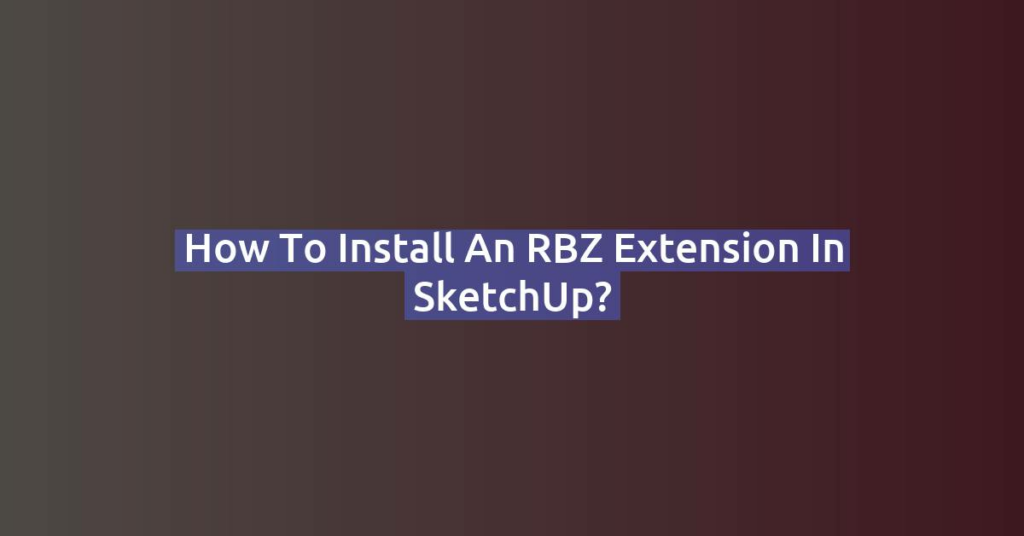In the world of design, architecture, and construction, a well-crafted portfolio is essential for showcasing your skills and attracting clients or employers. SketchUp, with its powerful 3D modeling capabilities, is an excellent tool for creating visually stunning portfolios that stand out. Whether you’re a student, architect, interior designer, or hobbyist, this guide will walk you through the steps to create a professional portfolio using SketchUp.
1. Planning Your Portfolio
Before diving into SketchUp, it’s important to plan your portfolio. A clear structure and purpose will guide your design process and ensure that your portfolio effectively communicates your skills and experience.
Define Your Audience
- Who Are You Targeting?: Are you creating this portfolio for potential employers, clients, or academic purposes? Understanding your audience will help tailor the content and presentation style to their expectations.
- Focus Areas: Consider the type of work you want to highlight. Whether it’s architectural designs, interior spaces, product designs, or landscape architecture, choose projects that best represent your skills and expertise.
Outline Your Portfolio Structure
- Introduction: Start with a brief introduction about yourself, your background, and your design philosophy. This sets the tone and gives context to the work you’re showcasing.
- Project Showcase: Organize your portfolio by project. Each project should include a title, brief description, key highlights, and visuals. Ensure a logical flow, starting with your strongest or most relevant work.
- Conclusion: End with a call to action, such as inviting potential clients or employers to contact you. You can also include a resume or list of skills and certifications.
2. Creating Stunning Visuals in SketchUp
Visuals are the heart of any design portfolio. Here’s how to create high-quality images and presentations using SketchUp.
Model Your Projects
- Detailed Modeling: Start by ensuring that your SketchUp models are detailed and accurate. Pay attention to proportions, textures, and materials, as these details will make your visuals more realistic and impressive.
- Use Groups and Components: Organize your models using groups and components. This not only makes modeling more efficient but also allows for easy adjustments and variations in your designs.
Rendering Techniques
- Photorealistic Rendering: Use rendering plugins like V-Ray, Enscape, or Lumion to create photorealistic images of your models. Rendering adds depth, lighting, and texture, making your designs look more professional and polished.
- Lighting and Shadows: Experiment with lighting settings in SketchUp or your chosen rendering software to highlight the most important aspects of your design. Proper lighting can dramatically enhance the visual appeal of your images.
- Textures and Materials: Apply realistic textures and materials to your models. Custom materials can be created using images or procedural textures, which will give your models a unique and authentic look.
Creating Animations
- Walkthroughs and Flyovers: Consider creating animations to showcase your projects dynamically. SketchUp’s animation tools allow you to create walkthroughs or flyovers that provide a comprehensive view of your design.
- Time-Lapse Sequences: Show the evolution of your design with time-lapse sequences. This could include the construction process, changes in lighting throughout the day, or different design iterations.
3. Exporting High-Quality Images and Files
Once your models and renderings are ready, the next step is to export them for your portfolio. Here’s how to ensure you get the best quality.
Export Settings
- Resolution: When exporting images from SketchUp, choose a high resolution (at least 300 DPI) for print or digital portfolios. This ensures that your images are sharp and professional-looking.
- File Formats: Export your images in formats that preserve quality, such as PNG or TIFF. For presentations or online portfolios, JPEG files with minimal compression can also be used.
- Vector Graphics: If you need line drawings or 2D views, export them as vector graphics (PDF or SVG). This is particularly useful for plans, sections, and elevations.
LayOut for Presentation
- Creating Layouts: Use SketchUp’s LayOut tool to create professional presentation boards. LayOut allows you to combine your SketchUp models with text, annotations, and other graphics to create cohesive and polished presentations.
- Custom Templates: Design custom templates in LayOut that match your personal or brand identity. This adds a professional touch and ensures consistency across your portfolio.
- Page Setup: When preparing for print, ensure that your pages are set up correctly with appropriate margins and bleed areas. This is important for ensuring that your portfolio looks professional when printed.
4. Organizing Your Portfolio
How you organize and present your portfolio is just as important as the content itself. A well-structured portfolio enhances readability and ensures that your work makes a strong impact.
Digital Portfolio
- Interactive PDFs: Create an interactive PDF with clickable links, navigation buttons, and embedded videos or animations. This format is ideal for emailing to potential clients or employers.
- Online Portfolios: Consider hosting your portfolio on a website or portfolio platform like Behance, Adobe Portfolio, or Wix. Online portfolios allow for easy sharing and can include multimedia elements like animations and interactive models.
- Video Portfolio: Compile your best work into a video portfolio. Include animations, rendered images, and brief text descriptions. Platforms like YouTube or Vimeo are great for showcasing video portfolios.
Print Portfolio
- Professional Binding: For a print portfolio, choose a professional binding method such as perfect binding or spiral binding. The cover and paper quality should also be high to create a lasting impression.
- Consistent Layout: Maintain consistency in your layout, fonts, and colors throughout the portfolio. This not only looks professional but also makes it easier for the reader to navigate your work.
- Captions and Descriptions: Include concise captions and descriptions for each project. Explain your role, the challenges you faced, and the solutions you implemented. This provides context and helps the viewer understand the significance of your work.
5. Showcasing Your Portfolio
Once your portfolio is complete, it’s time to showcase it to the world.
Job Applications
- Tailor to the Role: When applying for jobs, tailor your portfolio to highlight the skills and projects most relevant to the position. Include a mix of visuals and written content that demonstrates your experience and expertise.
- Print Copies: Bring print copies of your portfolio to interviews. This shows that you are prepared and allows the interviewer to review your work in detail.
Client Presentations
- Customized Presentations: For client presentations, customize your portfolio to focus on the types of projects the client is interested in. Highlight your most successful or relevant work to build confidence in your abilities.
- Leave-Behind Materials: Create leave-behind materials, such as a smaller printed version of your portfolio or a business card with a link to your online portfolio. This keeps you top of mind after the meeting.
Social Media and Networking
- Share on Platforms: Share your portfolio on social media platforms like LinkedIn, Instagram, or Pinterest. Engaging with professional communities online can increase your visibility and attract potential clients or employers.
- Networking Events: Bring a digital or print version of your portfolio to networking events. Being able to quickly showcase your work can lead to valuable connections and opportunities.
Conclusion
Creating a professional portfolio with SketchUp is a powerful way to showcase your design skills and attract opportunities. By planning your portfolio carefully, creating stunning visuals, organizing your content effectively, and sharing it with the right audience, you can make a strong impression and stand out in a competitive market.
Ready to start building your SketchUp portfolio? Follow these steps, and watch your designs come to life in a professional and impactful presentation.



